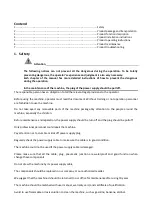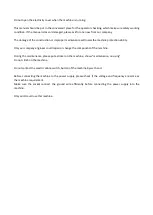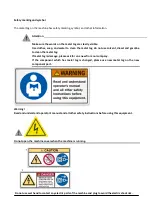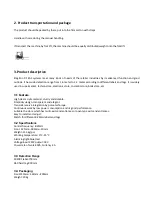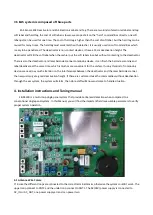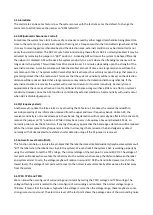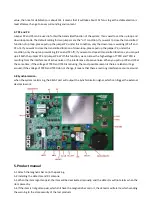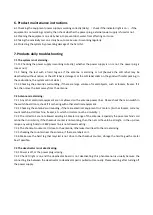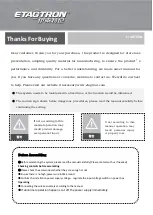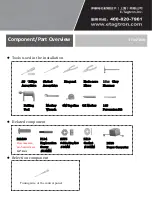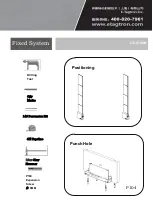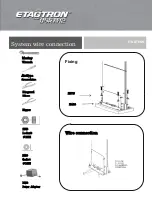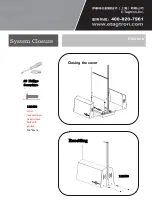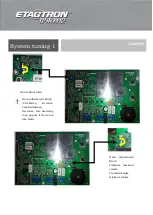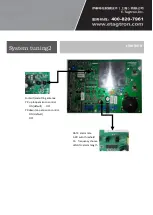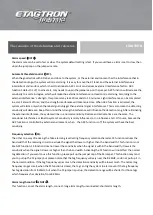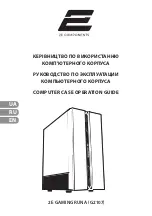
4.2
Alarm Rate:
The alarm rate can be set as fast or slow. The system comes with the fast rate set as the default. To change the
alarm rate to SLOW, remove the jumper on “RATE/LENGTH ”.
4.3 ARC(Automatic Resonance Control):
Sometimes the system may alarm because of a resonance caused by either tagged merchandise being placed too
close to the system or by an external condition that rings at a frequency within the transmitted signal band. While
it is easy to move tagged merchandise beyond the detection area, external conditions may be intermitted or not
easily found and corrected. The ARC circuitry helps in minimizing these effects. ARC is normally disabled. It may be
activated by removing the jumper on “ARC” position 1. Activating ARC will cause the system to behave differently
than when it is disabled. ARC will reduce the system sensitivity to a point where the offending resonance will no
longer alarm the system. This will take from 20 seconds to over 1.5 minutes, depending upon the strength of the
external resonance. A small resonance will take the smallest amount of time and a large resonance will take the
most amount of time. The system will still work after ARC is activated, but will only respond to tags that present a
greater signal level than the resonance. This means that the system’s sensitivity will be reduced, so the detection
distance will be reduced. Noted that a large resonance may reduce the detection distance significantly. If the
external resonance is removed, the system will recover and return to its normal sensitivity. Recovery time is
approximately the same as activation time. Transitional resonance or tags will have little or no effect on system’s
sensitivity. However, since the ARC function is controlled by external conditions, best sensitivity will usually occur
when ARC is disabled(jumper on).
4.4 FS(Frequency Select)
:
Another way to reduce the false alarms is by activating the FS feature. FS reduces the receiver bandwidth to
exclude processing of any information received from the upper and lower frequency bands. Unlike ARC, the
receiver sensitivity is not reduced except in these bands. Tag detection will not normally be affected. To activate FS,
remove the jumper on “FS” position 1. While in tmay be can vary in frequency above and below 8.1 MHz, so
normally pl do not use the FS function. If any tags frequency approaches the band edges, detection will be reduced.
While the normal spread of tag frequencies is rather narrow, tags that are nearer the band edges may detect
normally with FS deactivated but exhibit a shorter detection range if the FS jumper is removed.
4.5
Automatic Level Control(ALC):
This function can help us to solve the problem that the label becomes disabled suddenly(maybe some systems will
“kill” the label when the label is too close to the system). We can check if the system’s ALC is working properly by
using the voltmeter to test the TPC voltage. The normal voltage of the test point is around 40V DC. The voltage of
test point will reduce when we take the label close to the system, when we keep the distance between the label
and system almost to zero, the voltage maybe will reduce to around 1V DC(the transimitted power reach to the
lowest level). The voltage of test point will recover to the normal level automatically after we take the label away
from the system.
4.6 TP3D
.
TP2D and TP3D
:
We can know the noise figure of surrounding environment by testing the TP2D voltage and TP3D voltage. The
voltage of testing point is related to the noise figure of surrounding environment. The normal voltage range is
70-90mv. It means that the noise is high when the voltage is more than the voltage range, there maybe are some
strong noise source around. The electronic level of the test point shows the average value of the surrounding noise


